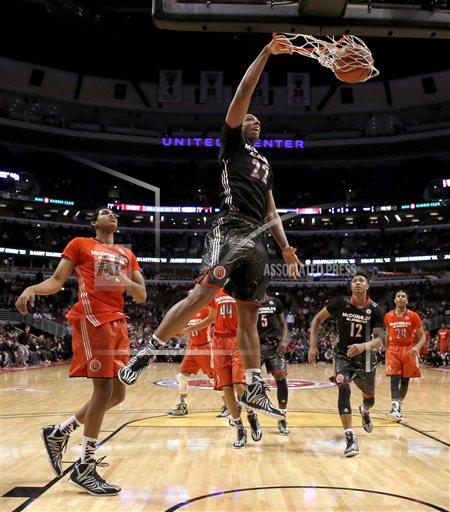Think of yourself as a middle or high school athlete. You put in your time in during the week, be with your teammates, perform in games, some adulation from your family. Usually, however, it isn’t your whole life, you don’t expect to make it a life-long investment. Some families think different. In a fascinating new trend for basketball prospects, families are investing, quite literally, in their kid’s futures.
Many younger basketball prospects are being intentionally held back during middle school, and the reasons given cause a divide in the battle between student versus athlete. Some stay back because of legitimate excuses, such as needing to work on academics or having a late birthday, while some say they stay back to get physical maturity on the court. Former NBA star and touted high school recruit Jalen Rose said on his podcast recently “What’s the difference in going in college at 19 or 20 versus 17 or 18? It’s called maturity.”
That is the ultimate goal for staying back in middle school, for these prospects to enter college a year older than many of their peers, and having a leg up on the competition. “Young prospects in basketball and their families have decided,” Rose said, “to hold back their young prospect a grade to allow them to have a physical, mental, and emotional advantage.” Why middle school then, instead of an extra year of high school seasoning? In most states, athletic rules state that athletes can only play four years in high school, so that if they want to play extra and reap the rewards of staying back, they need to do it in middle school.
So how are families making this investment? Many of these prospects, including top-rated 2015 prospect Karl Towns, are actually reclassifying grades, meaning that when they get to high school, they go from their sophomore year right to their senior one. Many of the top young players of today, including 76ers’ big man Nerlens Noel, have done this trick, though some have done it for legitimate reasons such as transferring from private to public school and keeping their academics up.
To the question of if these decisions are made for basketball reasons, in an NJ.com interview with Towns, he states that “Me and my family talked about it, and it just felt like it was the best decision for me basketball-wise, to go and move to the next grade…It’s one of those things that just seems to be happening now.” Dave Telep, national recruiting expert for ESPN, says “It’s no longer a trend — it’s an accepted practice within high school basketball.”
The financial advantage is definitely there, however. Having the extra year of maturity could be worth the investment, to the tune of hundreds of millions of dollars. Andrew Wiggins, projected top pick of the 2014 draft, repeated a grade in middle school, and in part because of the extra year, Adidas is reportedly ready to throw a 180 million dollar shoe contract at him. On top of this, some prospects who are projected as a late first round pick in the future stay back a year, improving their game and their draft stock. Doing this can be worth millions as well, as the difference in first year pay between the first and 20th pick in the NBA draft is a little over 3 million dollars, more than worth the price of repeating a grade.
If the reasons are purely basketball, purely business, or a combination of the two, the prospects still get plenty of advantages. In size, speed, mental ability, and more practice time to hone their skills. Whether or not people agree with this tactic, it is surely one that will continue, as many of the top prospects for the 2014 and 2015 NBA drafts have either been held back or reclassified. For professional basketball, the future begins early. These prospects should be ready for the pros, after all, they have an extra year to get there.


